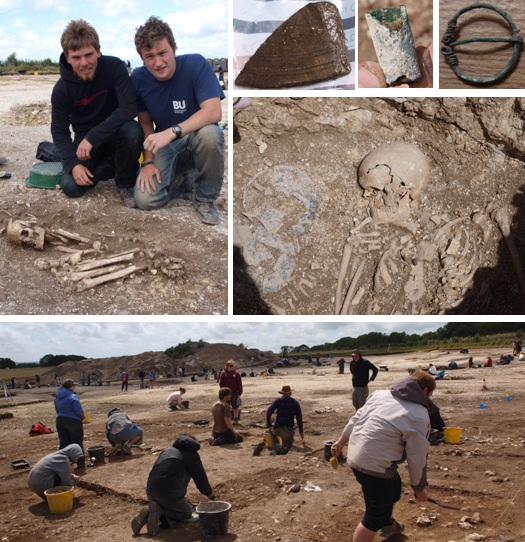After a sudden downpour this morning, the day brightened up, but still there were gusts of wind blowing over the site. Our American guests are settling in and said that everyone has been friendly and helpful with lending a hand in excavating and assisting with interpreting their features.
In a neighbouring pit to the crouched burial in area ‘A’, another ‘bed of meat’ has been uncovered at its base. The very large pit contains a well preserved and intact horse skull, pelvis, mandible, vertebrae and ribs. There has also been found a sheep mandible and minute rodent remains, which require a keen eye to spot.
Besides the skeletal remain previously mentioned; another individual discovered may in fact be the transition between Iron Age to Roman burial practices. The skeleton has been placed into the cut out pit which is not in a north-south alignment as found in the earlier Iron Age burials, but rather in an east-westerly late Iron Age early Roman period position. However, while the skeleton is flexed it is not in the later Iron Age crouched foetal placement. The arms of the individual are placed in an unusual manner compared to the other burials. The grave also houses two pottery vessels in front of the face and there is a form of food source for the afterlife (again, both similar to later crouched burials). Therefore, it could be that this individual’s burial represents the transition of Durotrigian burial practice from pit burials to the crouched form placed in individually cut graves.
Today saw the recovery of a penannular brooch, much the same in shape and size as one found last year. A unique piece of worked shale was unearthed that was flattened which may possible resemble some form of a plate/platter.
Hopefully, the weather will improve for the remainder of the Big Dig project as the rain has affected our progress in completely excavating the site.
Zoe and Lauren
